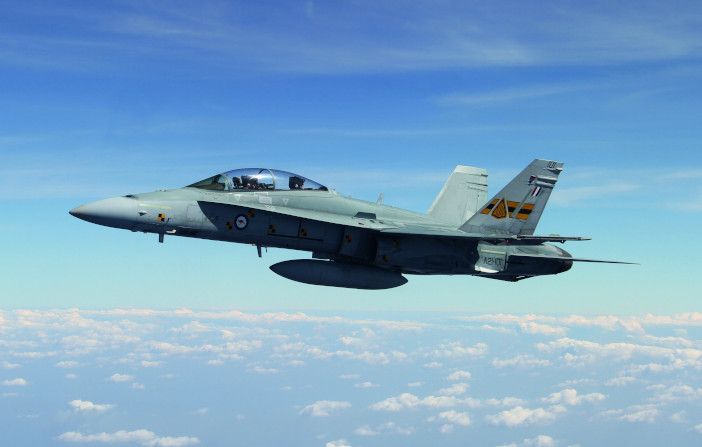Written by Nigel Pittaway
Defence Innovations’ Non-Intrusive Flight Test Instrumentation system is now undergoing verification and validation testing before being delivered to the Royal Australian Air Force this year.
Non-Intrusive Flight Test Instrumentation (NIFTI) is a means of conducting flight testing without having to undertake expensive, intrusive and time-consuming installation of wiring and sensors on the test platform.
Defence Innovations signed an acquisition contract with the RAAF’s Air Warfare Centre (AWC) in October 2016 and the first complete system was delivered in August 2019, subject to satisfactory completion of verification and validation (V&V) testing.
NIFTI genesis
The concept for NIFTI originated within Australia’s Defence Science and Technology Group (DST) and has been developed by Defence Innovations in conjunction with the AWC’s Engineering Squadron and the Aircraft Research and Development Unit (ARDU).
The NIFTI system uses a series of battery-powered wireless sensors, which are either tri-axial accelerometers or strain gauge interfaces and are applied to the external skin or internal structure of an aircraft with the use of approved methods of adhesion.
NIFTI uses a wi-fi system to send data to a data acquisition gateway. The number of sensors that can be used in any single test is determined by the sampling frequency. Currently, upwards of 24 sensors can be made readily achievable during a flight test.
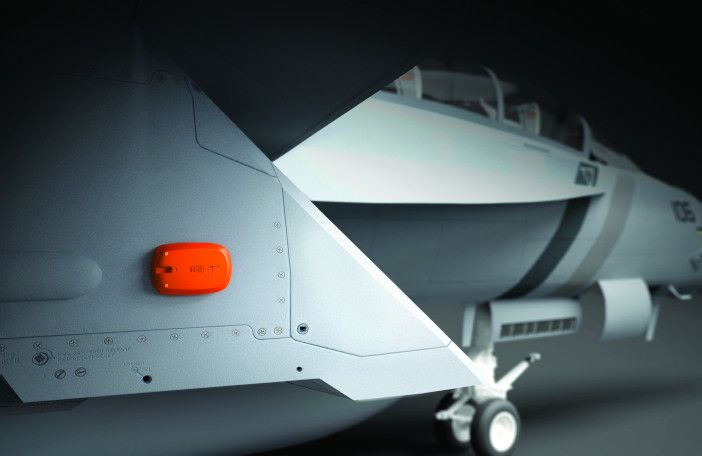
The data acquisition gateway is a modular unit which can be housed in a pod carried on any standard weapons pylon for military applications and is sized for installation inside a dummy AIM-120 Advanced Medium Range Air to Air Missile (AMRAAM) if required. For other applications, the gateway can be mounted wherever space permits.
Flight test data is transmitted from the gateway to an iPad mini strapped to the test pilot or flight test engineer’s knee to form the Human Machine Interface (HMI) for the NIFTI system.
“The data acquisition gateway is a fully-modular system with huge bandwidth, to ensure any future customer requirements can be accommodated. We have thought about things like bandwidth and power requirements,” explains Defence Innovations’ chairman and NIFTI program lead, Warren Canning.
“With the iPad you can individually determine the bandwidth of sensors and determine which sensors are on or off. You can pre-configure all your test points for a sortie and while in flight, if you hit just one icon, the system completely reconfigures for your next test point.”
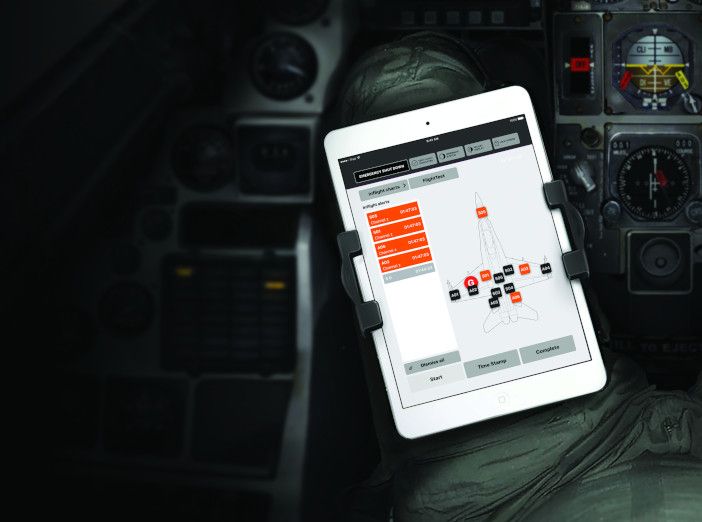
The lead customer for NIFTI is the AWC, which enjoys full visibility of the development process. Warren Canning credits the transparent relationship between defense and contractor as one of the fundamental keys to NIFTI’s success.
“So many great technologies never become great products, because the people developing that technology are so convinced that they understand everything about it, they don’t listen to the customer,” Canning explains.
“We have collaborated closely with the customer since day one, because it is that knowledge within the customer of what flight test instrumentation both needs to do and how it should work, in terms of that HMI, that makes a 21st Century flight test system.”
Flight testing
NIFTI was initially developed over an eight-month period during 2015, a process that included early proof of concept flight tests using a civilian YAK-52. This led to a further series of concept demonstrations using an ARDU Pilatus PC-9/A in October 2015.
The PC-9/A test aircraft was instrumented with 12 tri-axial accelerometer sensors, held on with double-sided adhesive tape, and a Data Acquisition Gateway installed in a supersonic camera pod on an underwing hardpoint all within an hour.
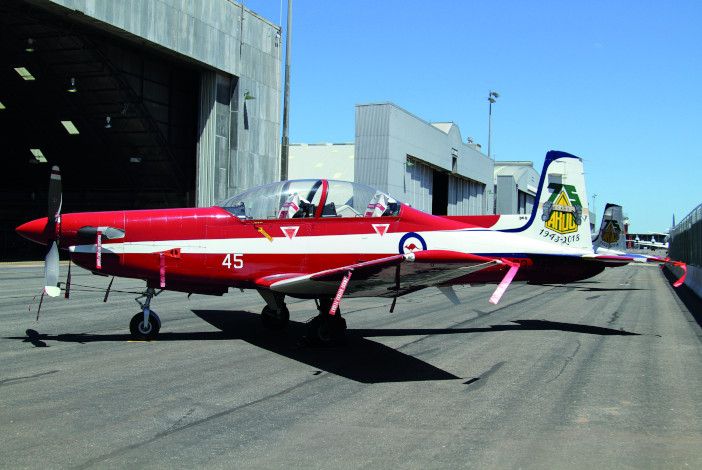
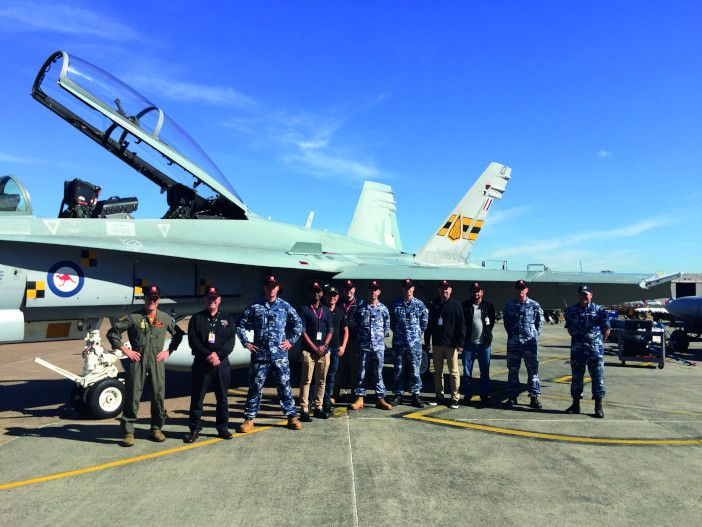
Phase two of the flight test evaluation followed in May 2018, when an operational F/A-18B Hornet was fitted with NIFTI in a process which took around four and a half hours. The Hornet then flew two supersonic sorties, up to Mach 1.27 and the entire NIFTI kit was removed by a squadron technician with no prior experience of the system in 45 minutes, with no damage to the aircraft’s surface or sub-surface structure. The Hornet was then handed back to the operational squadron and flew an operational sortie the same day.
“We installed sensors on various external surfaces on the Hornet including the wingtip weapons stations, where traditional flight test wiring would have to pass through the wing-fold mechanism,” Canning says. “The air force estimated that to wire the aircraft for the same test would have taken two months.”
Potential market
Although the initial customer is the military, Canning says NIFTI has equal application in civil aviation, ranging from the large aircraft manufacturers down to business jet makers, general aviation companies and even consultant engineering services.
Although the system will not replace the traditional means of gathering flight test information during major type certification campaigns, such as those recently undertaken by Airbus with its A350 or Boeing with the 787, it can provide an agile, cost-effective solution should data be required about an area not initially instrumented.
“We have designed one of the data acquisition gateway modules to interface with existing flight test instrumentation capability. So, if you perhaps need another 20 channels of data in an area – to characterize something you may have seen in an area you weren’t expecting to see it – you can add NIFTI into the system in a few hours, do the flight test and then decommission the system in an hour or so,” Canning explains.
“That’s the sort of agility it will bring to flight test – even for traditional wired flight test.”
Although the initial focus has been the aerospace sector, given the RAAF launch customer, NIFTI has applications wherever instrumentation and sensors have data to transmit. Other potential future markets include ships, submarines or even motor vehicles.
Defence Innovations’ plan is to both supply NIFTI as a ready-to-use kit and lease the system alongside the expertise to operate it for smaller organizations who may not wish to purchase the capability.
“It’s not just military flight test, but the manufacturers of light sport aircraft, general aviation aircraft, business jets, agricultural aircraft and the like. It will bring the ability to perform advanced flight test in a very agile and cost-effective way to a large market segment beyond military flight test organizations,” Canning says.
Verification & Validation testing
The final hurdle before NIFTI enters service with the RAAF is the successful conclusion of V&V testing, which has already begun in Defence Innovations’ laboratory in Melbourne. “V&V testing is all about ensuring the system is reliable, because the last thing you want to do is conduct an expensive flight test and come back without any data. Also, that it meets requirements in terms of things like bandwidth, sampling rate, standby duration and actual recording duration,” Canning explains. “When we’re confident we have the system 100% functional and reliable, we will progress to flight test before we hand it to Air Force for acceptance testing.”
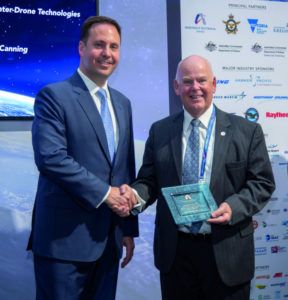
Defence Innovations was awarded the Avalon 2019 National Defence Innovation Award for NIFTI at the Australian International Air Show in Victoria during February this year.
“The NIFTI system represents a breakthrough and quantum leap in flight test instrumentation, because it is lighter, cheaper and quicker to install and remove than a conventional flight test instrumentation package,” the award citation reads.
“Ordered by the RAAF and proven in supersonic flight testing, NIFTI uses sensors that communicate with an on-board data acquisition gateway using wi-fi. It is possible to instrument a supersonic aircraft with a NIFTI package in a matter of hours – instead of weeks – and then remove the installation in less than an hour to return the aircraft to frontline service. Its domestic and export market potential are both significant.”
Future developments
Development of NIFTI beyond its original concept includes consideration of additional sensor capabilities, including those for control column position and force and integration of Time, Space and Position (TSPI) information.
The inclusion of TSPI will provide critical information during trials such as air combat maneuvering sorties, air-to-air refueling trials and stores releases testing.
“We’re also starting to look at a range of other sensors, such as a universal analogue input sensor, so you can literally plug in whichever analogue node you have and it will be converted to digital information and transmitted to the gateway for recording,” Canning says.
NIFTI has also attracted interest from manufacturers of unmanned platforms and Canning says this market is under consideration for future development of the system. While the work is still in the conceptual stage, Canning says the need for such a system is evident, particularly in the High-Altitude Long-Endurance drone sector, where platforms are required to operate for many hours in relatively thin air and close to the flutter margin.
The future export potential of NIFTI is significant, but for now Canning says the focus is to complete V&V testing and deliver the product to the RAAF, before engaging in any serious discussions with other parties.
“However, I am very confident that, later this year, we will be demonstrating the system to the many potential customers who have made enquiries,” he says.
This article appeared in the print edition of Aerospace Testing International. See the article and others like it in their original format here. Subscribe to the quarterly print issue here and to our weekly newsletter for similar articles.


